市场资讯及洞察

New U.S. Sanctions on Russia as Putin Conducts Nuclear Tests
The U.S. has imposed new sanctions on Russia's two largest oil companies, Rosneft and Lukoil, after planned peace talks between Trump and Putin collapsed on Wednesday.
Oil prices spiked 3% after the announcement, with Brent crude hitting $64 per barrel.
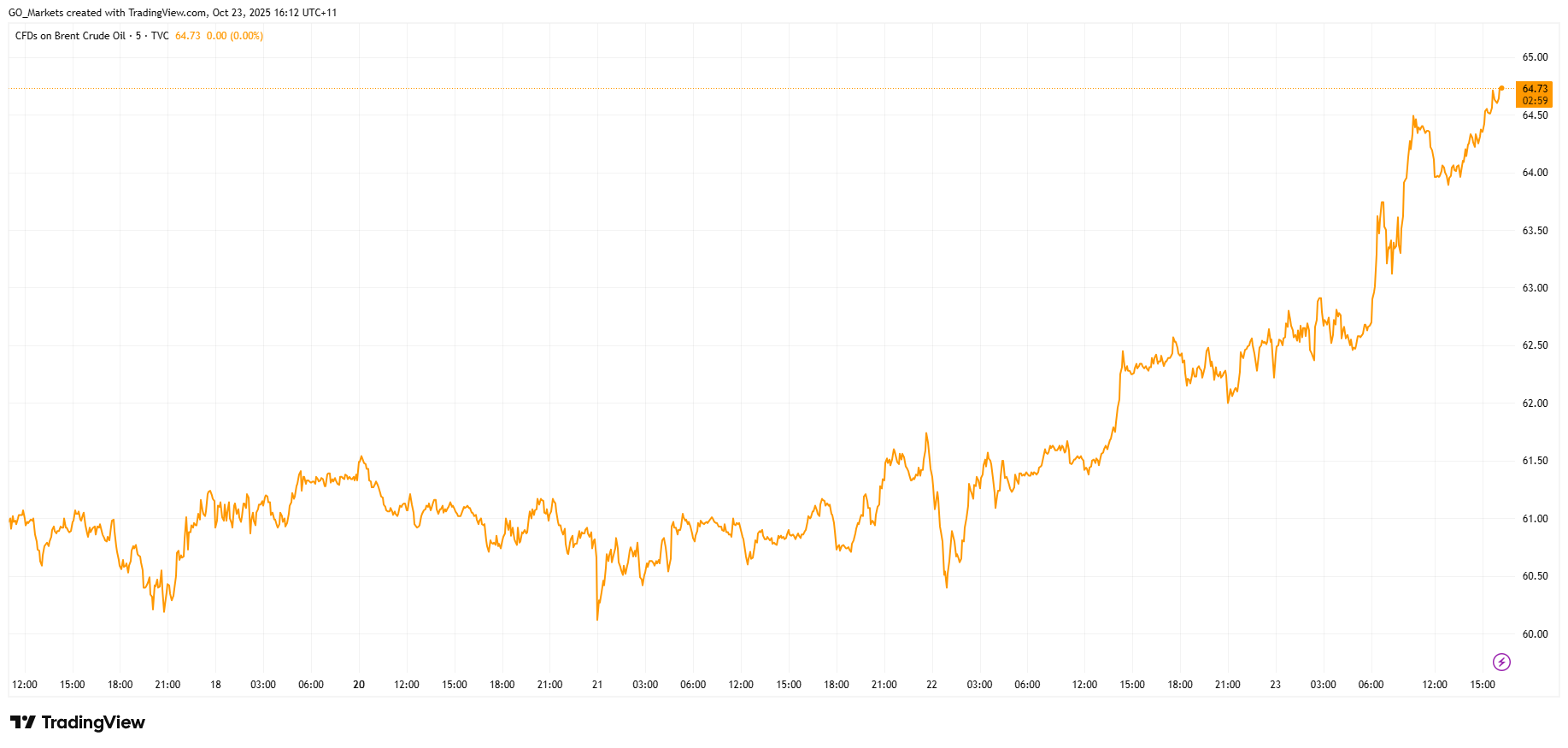
The targeted companies are among the world's largest energy exporters, collectively shipping about three million barrels of oil daily and accounting for nearly half of Russian production.
The sanctions build on recent European measures, as the UK targeted the same companies last week and the EU approved its own sanctions package on Wednesday.
In a show of force coinciding with the new sanctions, Putin supervised strategic nuclear exercises on Wednesday involving intercontinental ballistic missile launches from land and submarine platforms.
While the Kremlin emphasised these were routine drills, the highly coincidental timing is notable.
For markets, the key question now is whether secondary sanctions will follow, and if Trump’s enforcement remains strict. Traders will watch closely for any TACO signals that see Trump ease pressure in an attempt to restart negotiations.
Historic PM Wasting No Time on Celebrations
Sanae Takaichi made history this week as Japan's first female Prime Minister. The 64-year-old conservative leader, dubbed the "Iron Lady,” is already rolling out an aggressive policy agenda that could reshape Japan's economic and geopolitical position.
Her first major move is an economic stimulus package expected to exceed US $92 billion. The package includes abolishing the provisional gasoline tax and raising the tax-free income threshold from ¥1.03 million ($6,800), moves designed to put more money in consumers' pockets and battle inflation.
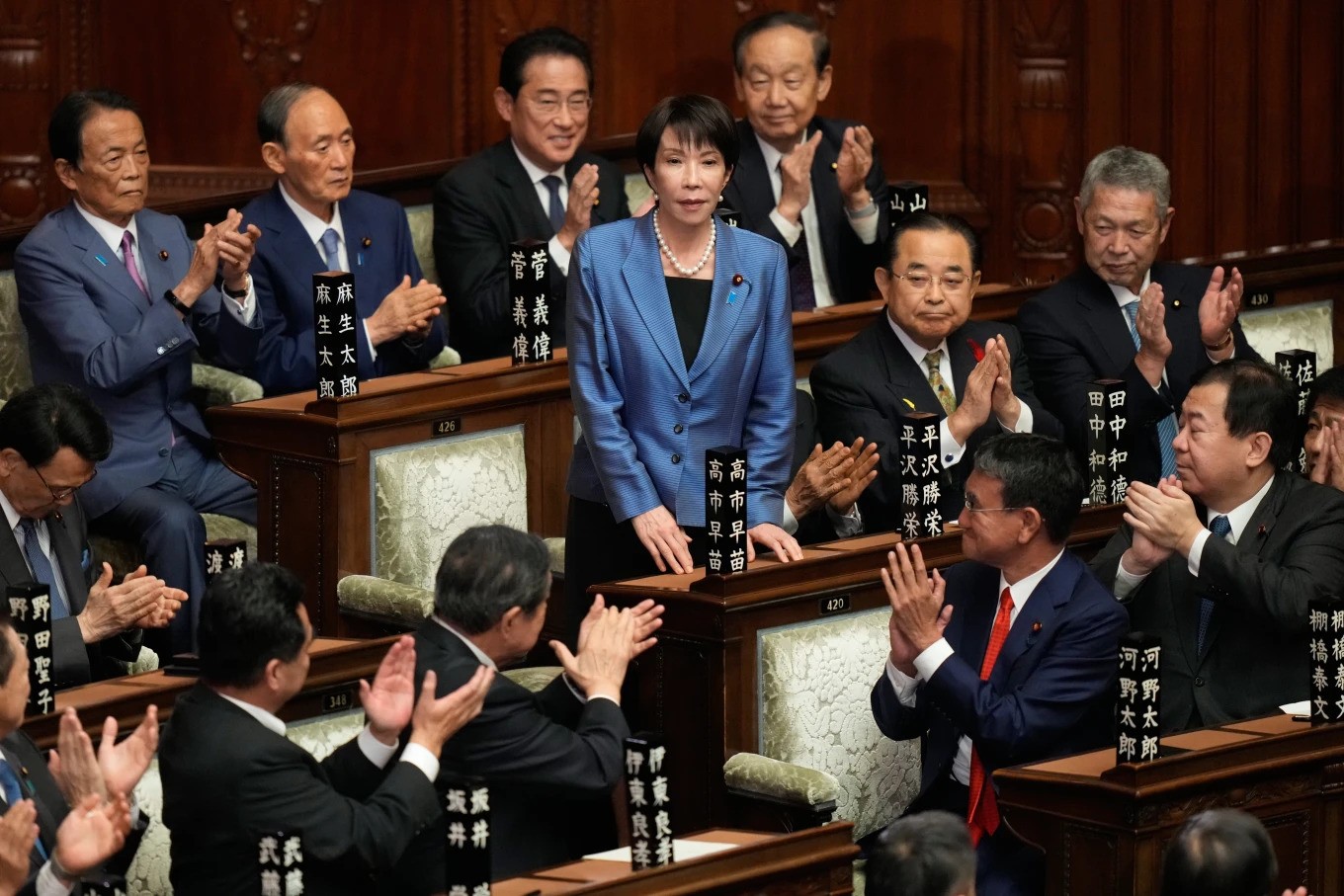
Her next move will come when Trump arrives in Tokyo next week, as the Japanese government is finalising a purchase package including Ford F-150 pickup trucks, US soybeans, and liquefied natural gas as sweeteners for trade talks.
Takaichi has campaigned on being a champion for expansionary fiscal policy, monetary easing, and heavy government investment in strategic sectors, including AI, semiconductors, biotechnology, and defence.
Critical Workers to Miss First Paycheck Due to Shutdown
The U.S. government shutdown is on the verge of creating a crisis for aviation safety, with 60,000 workers set to miss their first full paycheck this week.
These essential workers, who earn an average of $40,000 annually, already saw shortened paychecks last week. By Thursday, many will receive pay stubs showing zero compensation for the coming period, forcing impossible choices between basic necessities and reporting to work.
During the last extended shutdown, TSA sick-call rates tripled by Day 31, causing major delays at checkpoints and reduced air traffic in major hubs like New York — disruptions which are directly attributed to pressuring the end of the previous shutdown.
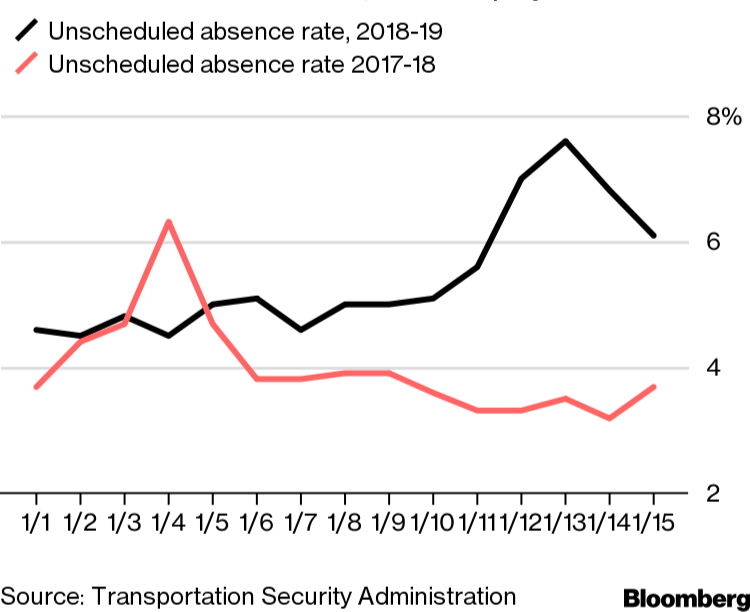
The National Air Traffic Controllers Association warns that similar pressures are building, with many workers soon to be facing a decision between attending their shift or putting food on the table.


热门话题
在本周,除了deepseek的横空出世,全球金融市场的目光还聚焦于美联储即将公布的利率决议。市场普遍预期美联储将维持当前利率不变,但特朗普总统近期的降息呼声为这一决议增添了不确定性。自2024年下半年以来,美联储连续三次降息,每次25个基点,将联邦基金利率目标区间下调至4.25%-4.50%。这一系列降息的主要目的在于应对经济增速放缓,降低借贷成本并且缓解通胀压力。然而,近期数据显示,美国经济呈现出复杂的信号。2024年12月,非农就业人口增加25.6万人,远超市场预期的16.5万人,失业率降至4.1%。与此同时,通胀虽然回落但其实依旧高于预期,12月CPI同比上涨2.9%,核心CPI同比上涨3.2%,略低于预期的3.3%,但仍然高于美联储2%的通胀目标。
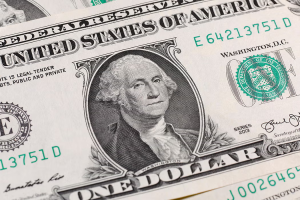
根据CME“美联储观察”,市场预期美联储在1月30日的会议上维持利率不变的概率为99.5%,降息25个基点的概率仅为0.5%。然而,特朗普总统近期表示,希望美联储立即降息,声称自己“比美联储更懂利率”,并计划在“合适的时候”与美联储主席鲍威尔讨论此事。特朗普的表态引发市场对美联储独立性的担忧,毕竟特朗普曾经在2018到2019年强烈要求美联储降息,并且最终却是促成了美联储从2019年下半年开始降息,这表明虽然美联储强调政策独立,但政治影响依然不容忽视,所以特朗普这次的发言也增加了对未来货币政策走向的不确定性。本周,除美联储外,欧洲央行、瑞典央行、加拿大央行、巴西央行和南非央行等也将公布利率决议。其中,欧洲央行备受关注。多位欧洲央行官员表示支持进一步降息,行长拉加德在进入静默期前表示,渐进式降息可能会持续,政策制定者有信心通胀率将在2025年达到2%的目标 。市场普遍预计欧洲央行将在本周会议上将关键政策利率下调25个基点,未来可能还会进一步降息。

在当前环境下,我们应该重点关注以下方面:1. 美联储的政策声明和鲍威尔的讲话:任何关于未来货币政策方向的暗示都可能引发市场波动。2. 全球其他央行的政策行动:尤其是欧洲央行的降息决定及其对欧元区经济的影响。3. 特朗普政府的政策动向:特别是可能对美联储施加的压力,以及对全球贸易政策的影响。总体而言,本周的央行决议和相关政策声明将为我们下一步的投资决策提供重要的指引,帮助我们在全球经济充满不确定性的背景下作出适合自己的决定。此外,作为投资者我们还要密切关注关注即将公布的美国2024年第四季度GDP初值,以及即将发布的科技巨头财报,这些数据将为评估经济健康状况和企业盈利能力提供进一步的线索。在全球经济充满不确定性的背景下,央行的政策决策和政府的政策动向将对市场产生深远影响。投资者需密切关注这些动态,以制定相应的投资策略。免责声明:GO Markets 分析师或外部发言人提供的信息基于其独立分析或个人经验。所表达的观点或交易风格仅代表其个人;并不代表 GO Markets 的观点或立场。联系方式:墨尔本 03 8658 0603悉尼 02 9188 0418中国地区(中文) 400 120 8537中国地区(英文) +248 4 671 903作者:Yoyo Ma | GO Markets 墨尔本中文部
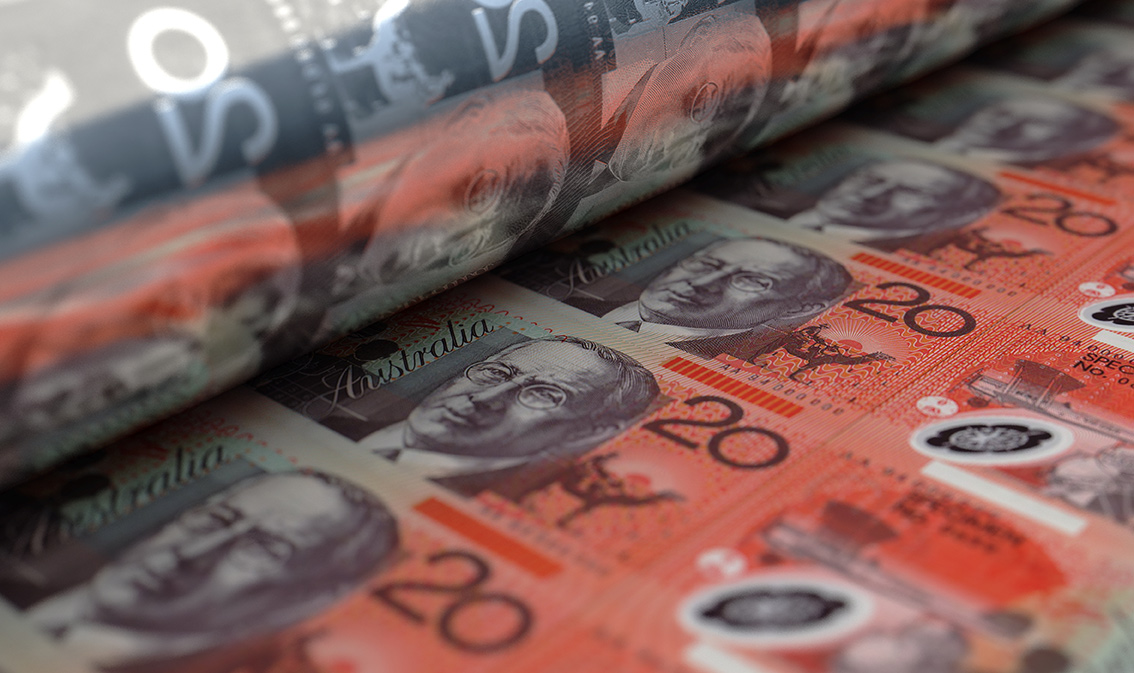

As we sit here and watch our overseas central bank counterparts move on interest rates. Our central bank gave us a new term, to explain why rate cuts are a long way off in their thinking. This term “sustainably” – that is “sustainably back to target”, “sustainable path”, and a hundred other zingers that basically point out that the central bank doesn’t think we are returning to the target band of its inflation mandate.
Yet despite this language and rhetoric, the movement in the market is – muted, bordering disobedient. The movement in the AUD has been strong as seen in the chart below. But that is basically down to the news out of China, (which we will come to later) and the US Fed finally pushing the trigger.
But domestically - the interbank and bond markets see rate cuts much sooner than the Board does, and if you look at the differentials between the RBA and the rest, there is a strong argument that the uptick in the AUD should be more than has occurred. What are we missing? So, what is it that the market sees that the RBA is missing?
Or more importantly – what does the RBA see that the market isn’t taking as seriously? First – we need to really drill into the August monthly inflation read, because there is some reasonable dispute between Board and Market. The headline monthly inflation rate fell to 2.7% and marks the first time in the post inflation era that Australia’s inflation has been back in the target 2% to 3% band.
Couple this with its decline from 3.5% in July and 4.0% in June. Thus, maybe the market has a point as it marks the lowest annual inflation rate since August 2021 and a sharp contrast to the 8.8% peak in December 2022. Which is why a lot are crowing about this chart from the ABS.
This may seem like a positive sign that inflation is under control and is ‘returning’ to a sustainable level, under the hood of the headlines, the data tells a different story. For example: The monthly index recorded a 0.24% decline between July and August, after a ‘no change’ from June to July. This decline is mainly down to a 0.58% increase in prices last August falling out of the 12-month calculation, so that is a one of and would be transitory and not sustainable.
We are also about to see another technicality happen this month when a similar 0.58% increase from September 2022 drops out. Even if we see a modest 0.2% rise between August and September, the headline inflation rate will likely fall further, potentially reaching 2.3% by September. This is a ‘seller beware’ issue for traders, bears will make a lot of noise about this but the RBA has made it clear here, it’s not for moving.
Next example: the August inflation drop is largely attributed to temporary relief measures. The whopping 14.6% decline in electricity prices in August was a direct result of the federal government’s $300 energy relief measure. The Queensland and WA state governments threw in $1000 and $400 respectively adding further downside in energy inflation.
Interestingly enough – since this has been pointed out the government has stated it might make the subsidy ‘semi-permanent’ again this is artificial and something the Governor has stated is transient. Finally August saw a 3.1% fall in petrol prices due to lower global oil prices – something that is likely to hold true for most of September but the increase tensions in the Middle East over the past week and China properly stimulating itself for the first time in the post COVID world coupled with the approaching Northern hemisphere winter that 3.1% reduction will be quickly returned. These highlight why the RBA never really pays much attention to headlines month-to-month quarter to quarter as it bounces around randomly.
And AUD traders in particular would be prudent to remember this. Stuck like a fly in a honey pot The catch with chasing the headline inflation figure is that although it may be back within the RBA’s target band the critical trimmed mean inflation rate, which excludes the most extreme price movers, is not. The trimmed mean rose by 3.4% over the year to August, down from 3.8% in July and 4.1% in June.
Now some will argue that is close to the band, but it’s still significantly above the RBA’s target range midpoint of 2.5% which is seen as the magical ‘sustainable’ point the RBA needs. For more context if we collate the first two months of the September quarter, the calculated annual underlying inflation rate sits at 3.6% even further away from the band and mid-point. The RBA’s most recent Statement of Monetary Policy forecast expects this to ease to 3.5% by the December quarter.
A full 1% above the midpoint illustrating just how stubborn inflation has been to budge. It’s even more of a headache when you look at where the stickiness sits Have a look at service-based inflation of education, health and financial services – these are all over 5% year on year. Then have a look at the housing.
Rent increases are still sitting at 6.8%, New dwellings 5.1%. These five things make up more than a third of the total CPI basket. There is nothing sustainable about these figures.
RBA versus the Market The RBA has been a pain to point out the issues of ‘purchasing power’, that long term issue of cost compounding on themselves and making essentials unattainable in the long run. This old adage is running through our heads: “short term pain for long term gain” thus from our views interest rates are staying on hold for the rest of 2024 as the RBA seems determined to make the inflation rate fall further before acting. Yet you wouldn't know it judging by the perception in the market - it is still pricing in a near enough to 75% chance of a rate cut at the December meeting.
How is that conclusion being reached? If we take what has been stated by the RBA as ‘baseline’ there is next to no information the RBA sees between November and December that would justify a cut especially if they do not cut in November. The only piece of additional information is the September quarter GDP figures (due first full week of December).
If that was to register a contraction and a recession is on the cards then maybe. That’s the only data that could trigger the RBA this year – but considering Government spending in this quarter is so large, the consumer will have had to really bottomed out and retail sales while poor are not that bad. With this in mind there is a real justification for the AUD to be higher than it currently is.
Each time we see another piece of data that is weak but not weak enough should be an upside mover for the currency. We are not normally ones to fight the market as the trend is your friend, and we are not considering the AUD has moved some 3.8% in September alone. It's more – we think the upside has more to go as the market realises it under-pricing a more hawkish RBA and it isn’t going to deliver Australian debtholders a Christmas present.
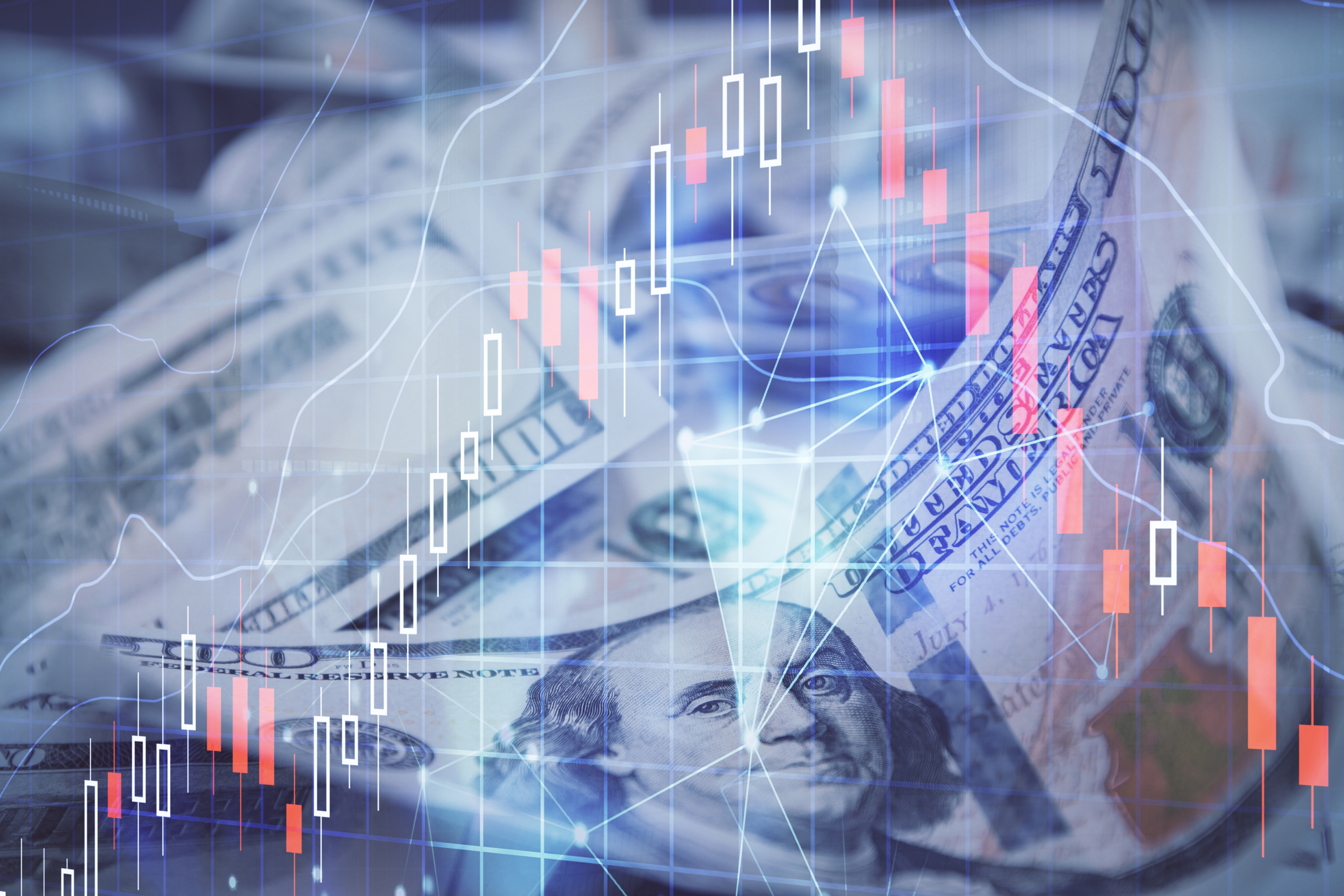

Will June be the turning point? The market thinks it is – and its reaction to the CPI data not only signalled how it will trade in the coming months. It also showed that traders are primed to rotate to even more bullish positions.
Because from the market’s perspective September is now more than live its near enough to a lock for the Fed to cut rates. The Data: Core CPI (excluding food and fuel) saw an anaemic rise of just 0.065% month on month falling well short of the 0.2% consensus. Key component of the slowdown was in owners’ equivalent rent (OER) to 0.28% month on month, with primary rents decreasing to 0.26%.
This is the first real piece of data that is shown shelter is finally bucking its upward trend and moving to the lower side. But it wasn't the only good news in the data. Core services prices, excluding rents and OER, dropped by 0.07% month on month.
Its lowest level in over 12 months. Hotel prices declined by 2%, while airfares saw a significant 5% drop. Recreation services decreased by 0.1%, while personal services rose by 0.9% month on month, driven by a 4% spike in legal services.
Core goods prices dipped by 0.12% month on month, with used car prices down 1.5% and new car prices falling 0.2%. Apparel prices crept up 0.1%, but furniture prices fell 0.2%. Overall the core CPI P data should give the Federal Reserve that bit more confidence that it's returning to target and that its rate cut cycle can begin sooner than probably forecasted.
Moving to headline CPI for the first time in more than four years monthly inflation dropped down 0.1% month on month and eased to just 3% year on year a 12-month low which also happens to be the three year low. There's a pretty good reasonable explanation for this we saw a 3.8% slide in petrol pricing which held inflation back and offset the 0.2% increase in food and shelter. So it's not completely clear cut The Fed can cut rates in September.
But we digress because the market is suggesting it will treasury yields tumbled off the back of this you only have to look at the three year and the 10 year to understand that right cuts not only are they coming but are coming in waves. It really dropped into further FX trading with the US dollar once again under real pressure. The US dollar Is something that we are still wary of there is definite downside in certain pairs.
AUDUSD, NZDUSD have pretty clear reasons to see the appreciation bullishness that has been transpiring. But we're not as confident in EURUSD GBPUSD or even USDCAD. The other trading reactions of note With the CPI slowdown being more pronounced than anticipated, especially in shelter prices, which saw a 0.27% increase in owners' equivalent rent, akin to pre-pandemic levels.
It does also put first quarter CPI into the box of being a blip rather than the trend. We think one of the more interesting trading movements off the back of the June CPI was the rotation out of mega caps and into small caps. One of the reasons the S&P 500 and the NASDAQ hoping so strong since October last year Has been on the premise the Fed would cut rates in 2024-2025.
However realistically has been driven by the magnificent 7 particularly NVIDIA, Apple, Meta and Microsoft. So much so that it's actually papered over issues in industrials another non tech exposed sectors that have move no idea the level that the tech sector has. There's a big question that’s been building what happens post the first rate cut?
Its been driving the bullishness in equities but once it becomes actual what next? There's been somewhat of an answer in the trading post the CPI data which showed the S&P 500 and the NASDAQ declining well the Russell 2000 jumped. The suggestion here is the market is looking to move into even more bullish positions in equities but also to cash in on the anticipated first rate cut that has been developed since October 2023.
We think that is a trade we need to be mindful of because what may appear to be good news with regards to the right cut cycle beginning is probably already priced in. Multiples in the US markets are high multiples in US tech stocks are incredibly high. Which reminds us of the old market adage buy the rumour sell the fact.
And maybe just maybe the trading post the June CPI data gave us a massive insight into what could happen in either the September or November Fed meeting months. But returning to the data we can't go past the other economic data that may have been missed that again muddy the calls for a September rate cut. The Labor Department reported that weekly jobless claims fell to 222,000 a further 17,000 decrease from the previous week.
Its the lowest level since June 1. Continuing claims dropped to 1.85 million. This suggests that although last week's nonfarm payrolls was much lower than expected the overall employment market is still firm.
Employment has been cited by the likes of San Francisco president Mary Daly as a reason to cut sooner rather than later. However if employment was to remain solid it could actually say a reverse of the trading that we've seen from the CPI data. It's why we remain vigilant and once again why we think the USD is a tricky denominator, and only have confidence in pairs that have clear central bank differentials as we explained last week.
We now await the data of the next two months heading into September 18 to confirm all these views.


We've held off making comments about the events of what happened last weekend. Everyone has seen it, everyone knows the horrible scenario that it was but it is probably also meant that we have missed really key economic and fundamental trading reasons U.S. markets are now in a very broad bull market scenario. Inflation It was only 10 weeks ago an unexpected surge in inflation meant the dominant question in markets was if the Fed would cut rates this year at all.
Some five weeks later it increased to one rate but is a distant memory of the three forecasted in January this year. That is now all changed downside surprises to the second quarter inflation and the continued rise in the unemployment rate have not only met cuts are likely but for the first time in 10 weeks the market is now forecasting 100% likelihood of a September rate cut. Seen here: Source: CME FedWatch In fact, as this chart shows there's even expectations that it may not just be a 25 basis point cut it could possibly be more.
Remember the current federal funds rate is 525 to 550 basis points. As we've said before in this trading US series, once the US Federal Reserve starts its right cutting cycle, it is unlikely to stop until it reaches the neutral rate. Expectations are building from investment houses that there could be a possible rate cut in 2024 that being September and December.
This is at least the consensus some are even suggesting that November could be included as well seeing the January forecast coming to fruition. Will understand this more tonight when governor Waller presents and adds a function but it's likely that he will back chair Powell's comments on Monday that ‘rights will need to be lower by the year end’. We think this is what is being missed over this week in relation to the bull market in equities and the change in FX and bond markets.
You only have to look at the Russell 2000 to understand this change. The industry is now up over 12.5 per cent in the last month alone and 7.5 percent of that has come in the last seven days. Compare that to the NASDAQ for example which actually sat still over the same period.
This is due to the rotation trade based on right cut expectations not the Trump trade. Remember small cap firms are much more reliant on capital borrowings and thus much more susceptible to interest rate movements. The index has been much unloved over the last trading period as small caps have been left in the dust due to their risk and exposure to rate.
But with the prospect of right cuts plural, the attraction to risk the attraction to rotate out of fully valued trades makes sense. Here is the performance of the Russell 2000 S&P 500 and the NASDAQ over the past seven days Source: Refinitiv - White: Russel 2000 Yellow: NASDAQ Blue: S&P 500 What will be very interesting to see is something like NVIDIA becoming a funding source as it is begun to show evidence of being. We see in NVIDIA, Meta and Microsoft falling into this funding category over the coming weeks, as traders move into higher risk.
What we think might catch them out is earnings. Earnings This brings us to the second part of what is driving U.S. markets. Earning season so far and yes, it's a small sample size, has been astounding.
All have been at the upper end or above the Street View. You only have to look at JP Morgan, Morgan Stanley and most of the other major banks to see this. The bellwether Caterpillar, a forgotten darling, showed just how well it is doing in this ‘soft landing’ economy and surged over 5 percent on its results.
Again explains the rotation out of the magnificent 7 and into other sectors something we foreshadowed in part one. How it is also a warning sign, the probability that NVIDIA and the others beat expectations is high. The question we need to ask is will it be high enough?
As if the markets rotating out now could it become reporting day traders have to catch up to better than expected numbers and miss out on a possible next leg? It is something to ponder yourselves as you look to position for what is clearly going to be a strong US earning season. This brings us to Apple.
News this week that it achieved $8 billion in sales in India is something that can't be ignored. India is a market that Apple has severely underperformed in over the last several decades as its main competitor in Samsung took hold with cheaper more compelling phones. However, all that has changed since COVID, the interruptions it experienced taking supply chains out of China have seen it diversify into the world's second largest populous country.
There is only upside for Apple in this space. Secondly data this week showed how well it is now integrating AI into the Apple ecosystems. The links between its watch, phone, eyewear, laptop and iOS systems are strengthening by the day.
It is clear that over the next five years AI will make the ecosystem more intuitive and more attuned to everyday use. Thus making apple products that much more attractive and that much more needed by its mature and evolving marketplaces. This explains why Morgan Stanley this week suggested that in the coming two years Apple could become a $5 trillion company.
Apple is up over 20 per cent in the last month, and it could be the one that confirms the bull market in the US he's going to be sustained. These two points alone explain why the Trump trade is not the trade driving markets. Yes there is an influence and yes it is something we will talk about over the coming months leading into the US presidential election.
But we want to be clear that what really is happening with the Trump trade is behavioural bias and it is blocking out the clear rational evidence that is driving things and thus don't be distracted by what you see. Concentrate on the concrete evidence that's in front of us.


Over the coming 48 hours and then over the coming 2 weeks, Fed speak and US data is going to be some of the best trading opportunities in 2024. It’s been a pretty low-vol year despite several events that would under normal circumstances be triggers for much larger fluxes in FX and bonds. But to date: that has not been the case.
Let's look at the first part of what will be a clear mover of the USD, bonds and US equities. Fed speak First off let’s review day one of Federal Reserve Chair Jerome Powell two-day semi-annual testimony to the Senate and the resultant reactions. To paraphrase the core, take outs from the testimony - Powell continued to spew out the lines around “inflation has significantly declined from its four-decade peak reached two years ago”.
Yet despite this improvement, “central bank officials require more progress before considering an interest rate reduction, while closely monitoring the job market.” Furthermore he also dropped this broken record line “We do not expect it will be appropriate to reduce the target range for the federal funds rate until we have gained greater confidence that inflation is moving sustainably toward 2%,” Powell noted in his prepared testimony to Congress. During the hearing, he refrained from predicting a rate cut this year or specifying its timing, unlike previous comments. “The most recent inflation readings, however, have shown some modest further progress, and more good data would strengthen our confidence that inflation is moving sustainably toward 2%,” he added. All this is known knowns but what did create interest for us traders was this line that lit bond and FX markets up like a Christmas tree “Elevated inflation is not the only risk we face.
Reducing policy restraint too late or too little could unduly weaken economic activity and employment.” The reaction to this was clear, have a look at the impact this line had on the USD DXY – 1 minute chart AUD/USD at a 7-month high. It is chasing the 28 December high now of $0.687. From a trading perspective, the US CPI data on Thursday coupled with the employment data in Australia on July 18 and Australia’s CPI data on July 31 that could confirm if the pair do reach this point – on current forecasts – it’s probable.
The catch (seeming we will see over the coming day) is US inflation that has only just stabilised with last month’s data showing there wasn’t a price increase for the first time since November. It explains why it’s hard to argue that ‘we are not at a sustainable level’. It also explains why the dot plots for example are only one rate cut this year, down from the three forecasted in March.
But the dot plots do highlight that once cuts begin – there is likely to be a steady slide in the Federal funds rate. Thus, the start will signal the possibility of 6 rate cuts by the end of that said cycle. If we look at the Fed preferred measure of inflation, the Personal Consumption Expenditures (PCE) price index.
It showed no monthly rise in consumer prices for the first time since November as well, with an annual rate of 2.6%, slightly down from 2.7% in May. But as New York Fed President John Williams highlighted just last week “Inflation is currently around 2.5%, indicating significant progress, but we still have work to reach our 2% target consistently,” said. This brings us to Thursday’s CPI data.
Core CPI data is expected to land at 3.4% unchanged from the May read, headline CPI is expected to fall to 3.1% from 3.3% and would be near the June 2023 low of 3%. Watch this space to anything below these two estimates and the USD will be off to the races. The other interesting part of Fed speak has been the pivot to employment and the risks of a ballooning unemployment rate.
Take for example Powell’s Senate testimony that the labour market has normalised but still faces risks. He compared the current job market to its pre-pandemic state, that being “strong, but not overheated.” This was backed up by showing that although the unemployment rate has risen to its highest level in over two years, employers continue to hire robustly. Couple this with the fact the gap between job openings and unemployed job seekers has significantly narrowed over the past year – a typical sign of a strong jobs market.
Senate Chair Sherrod Brown of Ohio however countered this with “I’m concerned that if the Fed waits too long to lower rates, the Fed could undo the progress we’ve made in creating good-paying jobs,” Which brings us back once more to the statement the markets got most excited about – how long should it wait? Powell acknowledged the Fed’s challenge of balancing the risks of rekindling inflation by cutting rates too soon against the potential weakening of the labour market by waiting too long. The Fed’s dual mandate is to stabilise prices and maximize employment, noting a recent shift towards a balanced focus on both goals.
Is this a signal that September is live? Trading in the rates market now put the September meeting at an even chance of the first cut. Consumer behaviour suggest that the Fed might have lower borrowing costs.
US retailers have reported weaker-than-expected sales, and consumer demand has been tepid this summer compared to last year. So that is what the Fed is seeing – now we need to see the actuals backing this view – thus Part 2 of trading the US will be a deep dive into the CPI data and if there is enough evidence we are ‘sustainably returning to target’.
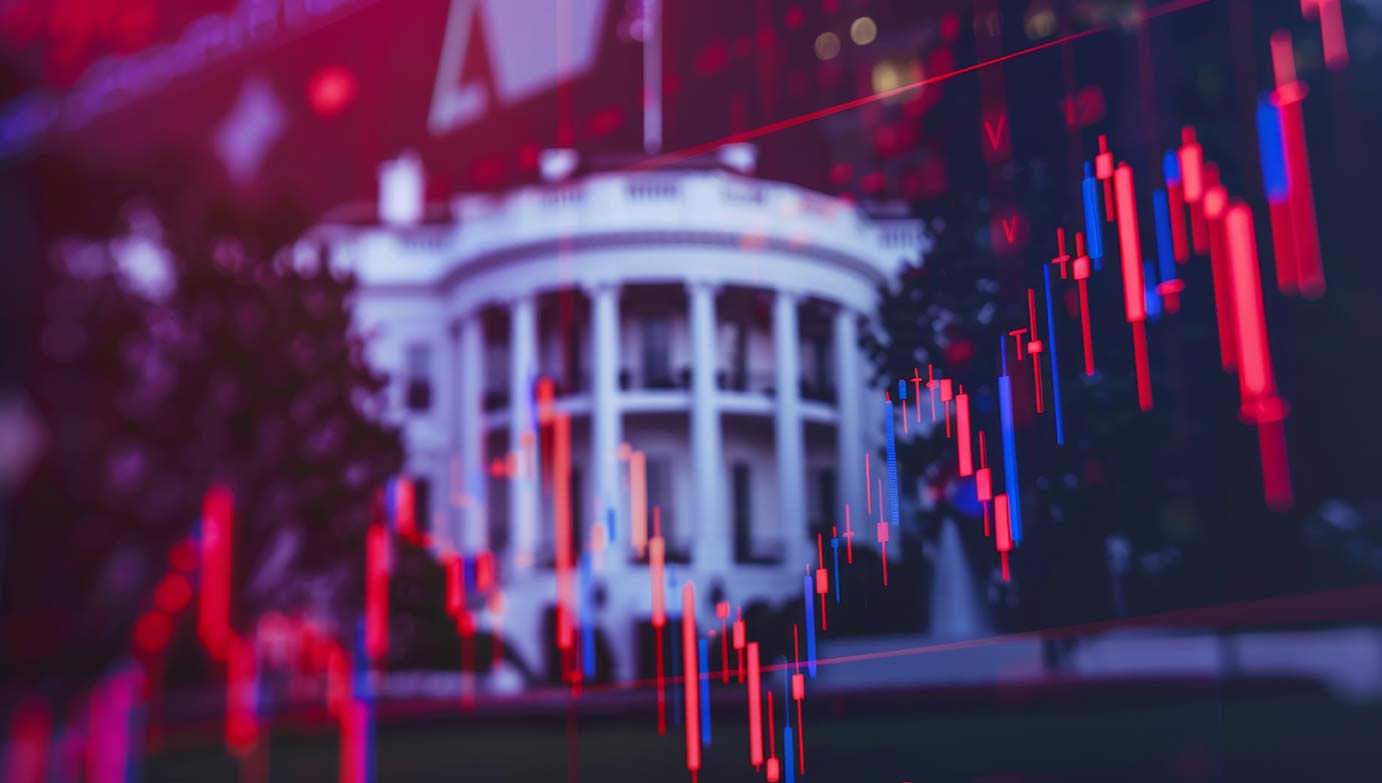

Join us for a special Inner Circle event as we examine the real-time market responses to the 2024 US Presidential Election results. We will explore market volatility and opportunities as reactions unfold across various asset classes. We will be hosting four live sessions throughout the day, led by our Head of Client Education and Senior Analyst, Mike Smith.
This is a valuable opportunity to observe, learn, and engage as we analyse chart movements, sentiment shifts, and technical setups in response to breaking election news. Session Schedule: 12:30 PM AEDT – US Polls Close & Early Asian Market Response 3:30 PM AEDT – Early Results & Key State Updates 6:30 PM AEDT – Preliminary Picture & European Open 9:30 PM AEDT – Fuller Market Picture & US Pre-Market Response Register now Whether you are an experienced trader or simply interested in the market's impact, you will gain valuable insights into how professional analysts assess and respond to significant events.

